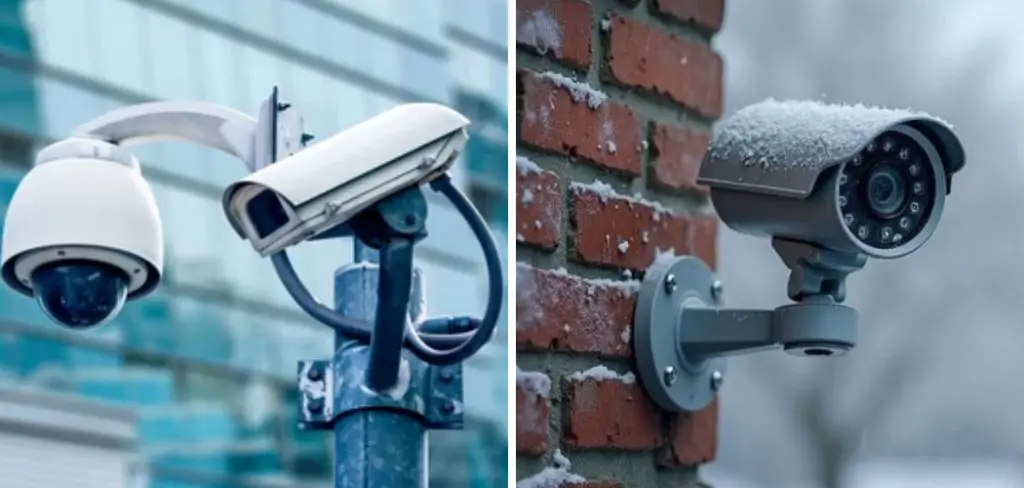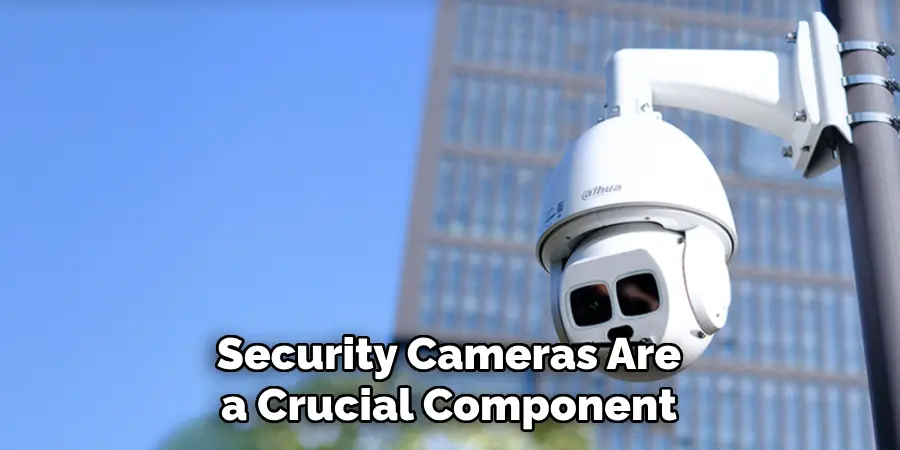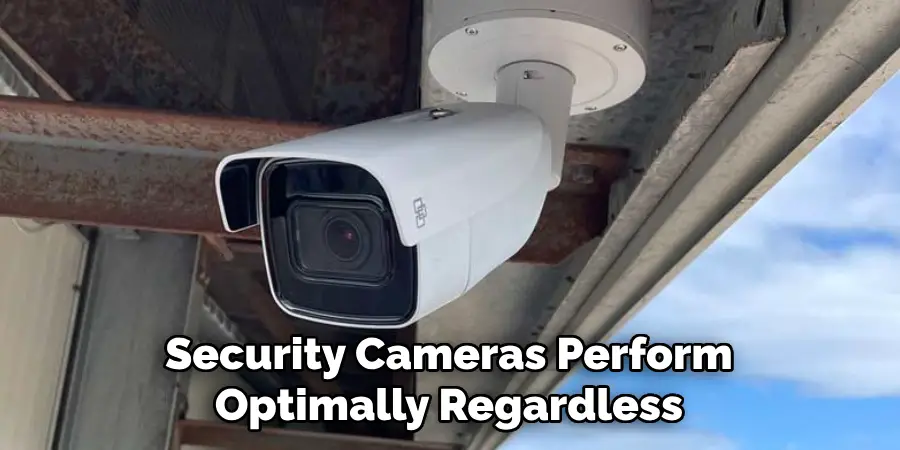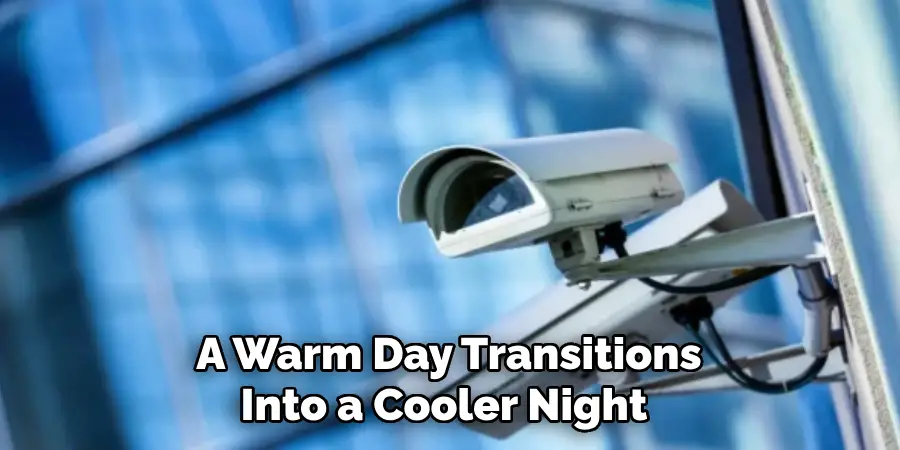Security cameras are a crucial component of any surveillance system, offering continuous monitoring and peace of mind. However, one common issue that can undermine their effectiveness is the development of fog on the camera lens. Fog not only obstructs the view but can also render footage unusable.

This issue typically arises in environments with high humidity, drastic temperature changes, or inadequate airflow. Understanding how to prevent fog is essential for maintaining clear and reliable video coverage, ensuring that security cameras perform optimally regardless of the conditions.
In this blog post on how to prevent fog on security camera, we will discuss several effective methods that can help you keep your cameras fog-free.
Understanding the Causes of Fog
Fog formation on security camera lenses can be attributed to several factors that create a conducive environment for moisture accumulation. One of the primary causes is high humidity, where moisture in the air condenses on the colder surface of the lens. This is particularly prevalent in regions with frequent rainfall or proximity to bodies of water. Another contributing factor is the rapid fluctuation in temperatures.
For instance, when a warm day transitions into a cooler night, the temperature discrepancy can cause condensation to form on the camera lens. Additionally, inadequate airflow around the camera housing can trap moisture, increasing the likelihood of fog. Understanding these causes is the first step in implementing effective solutions to keep your security cameras clear and operational.
Needed Materials
To prevent fog on security cameras, you will need the following materials:
- Anti-fog Spray or Wipes
- Silica Gel Packets
- Heater/blower Units for Camera Housings
- Waterproof Housing for Outdoor Cameras
8 Step-by-step Guidelines on How to Prevent Fog on Security Cameras
Step 1: Clean the Lens

Begin by thoroughly cleaning the camera lens to remove any dirt, dust, or existing moisture. Use a microfiber cloth to gently wipe the lens in circular motions to avoid scratches. For stubborn spots, consider using lens cleaning solution specifically designed for camera lenses.
Ensuring that the lens is clean will provide a clear starting point for applying further anti-fog measures and help maintain optimal image clarity.
Step 2: Apply Anti-fog Spray or Wipes
Once the lens is clean, apply an anti-fog spray or use anti-fog wipes specifically designed for camera lenses. These products form a protective layer that minimizes fogging by reducing moisture accumulation on the lens surface. Follow the instructions provided with the product to ensure proper application.
Typically, you’ll need to spray or wipe evenly across the lens, then buff gently for a clear finish. Regular application as part of your maintenance routine will help ensure consistent clarity and functionality of your security camera’s view.
Step 3: Use Silica Gel Packets
Silica gel packets are highly effective at absorbing moisture from the air, making them a valuable tool in preventing fog formation on security camera lenses. Place a few silica gel packets inside the camera housing, ensuring they do not obstruct any essential components. These packets will help maintain a dry environment within the camera, reducing the likelihood of condensation forming on the lens.

Be sure to check and replace the silica gel packets regularly, especially after periods of high humidity or rainfall, to ensure they remain effective. This preventive measure is a simple yet efficient way to enhance the performance and longevity of your security cameras in challenging environments.
Step 4: Install Heater/Blower Units for Camera Housings
For outdoor security cameras, installing a heater or blower unit within the camera housing is an effective way to prevent fogging. These units regulate the internal temperature of the camera housing, preventing rapid temperature changes that can lead to condensation on the lens. They also help maintain adequate air circulation, reducing moisture buildup and fog formation.
Be sure to hire a professional technician familiar with your specific security camera model to install these units properly. Regular maintenance checks should be carried out to ensure they are functioning correctly and replaced when necessary.
Step 5: Opt for Waterproof Housing for Outdoor Cameras
In environments with high humidity or rainfall, using waterproof housing for outdoor cameras can significantly reduce the chances of fog formation on the lens. The sealed nature of these housings prevents moisture from entering and accumulating on the camera’s exterior surfaces.
When selecting a waterproof housing, ensure it is compatible with your specific security camera model and has proper ventilation to prevent overheating. Regularly inspect the housing for any cracks or damage that may compromise its effectiveness.

Step 6: Monitor Airflow Around Cameras
Another preventive measure to consider is monitoring airflow around your security cameras. Ensure that there are no obstructions blocking air circulation within the camera housing. Outdoor cameras should not be placed in areas with minimal airflow, such as corners or crevices. Regularly clean any vegetation or debris that may block airflow around the camera.
Additionally, be mindful of where you position outdoor cameras in relation to buildings or other structures that may cause temperature fluctuations and wind patterns.
Step 7: Use a Dehumidifier
In areas with consistently high humidity, using a dehumidifier can help reduce moisture levels in the surrounding air, decreasing the likelihood of fog formation on security camera lenses. Place the dehumidifier strategically near your cameras to create a drier environment for optimal performance.
Regularly check and replace the cartridges or containers in the dehumidifier to maintain its effectiveness. Additionally, consider investing in multiple smaller units rather than one large dehumidifier for more targeted moisture control.
Step 8: Regular Maintenance Checks
Finally, it is essential to conduct regular maintenance checks on your security cameras to ensure they are functioning correctly and any potential fog-related issues are addressed promptly. This includes checking all components, such as the lens, camera housing, and anti-fog measures, for any signs of damage or wear.
Make sure to follow manufacturer guidelines on how to prevent fog on security camera for maintenance and replace any worn or damaged parts immediately. Regular upkeep will not only prevent fog formation but also extend the lifespan of your security cameras.
Maintenance and Tips
Maintaining your security cameras in optimal condition is crucial for their longevity and performance. To ensure that your cameras remain fog-free and fully operational, schedule regular cleaning sessions using lens cleaning solutions suitable for camera lenses. Integrate anti-fog treatments as part of your routine maintenance for sustained clarity.

Monitor and replace moisture-absorbing materials like silica gel packets or dehumidifiers to prevent fogging effectively. It’s advisable to perform bi-annual checks to assess the condition of all components, including housings and electrical connections, to address any signs of wear or damage promptly. Additionally, stay updated with the manufacturer’s guidelines and follow any specific maintenance recommendations for your camera model. Keeping an eye on weather conditions can also help you anticipate any adjustments needed to protect your cameras from harsh environmental elements.
Frequently Asked Questions
Q: How Often Should I Apply Anti-fog Spray or Wipes to My Security Camera?
A: It is recommended to apply anti-fog measures as part of your regular maintenance routine, especially after cleaning the lens. Depending on your specific environment and weather conditions, you may need to reapply more frequently.
Q: Can I Use Regular Glass Cleaner to Clean My Security Camera Lens?
A: No, it is important to use a cleaning solution specifically designed for camera lenses. Regular glass cleaners or other household cleaners may contain chemicals that can damage the lens coating or leave a residue that interferes with image clarity.
Q: How Do I Know if My Anti-fog Measures Are Working?
A: The best way to determine if your anti-fog measures are working is by regularly checking the clarity of your security camera’s view. If you notice any fogging or moisture accumulation on the lens, it may be an indication that your anti-fog measures need to be replaced or adjusted. It is also essential to conduct regular maintenance checks on all components of the camera to ensure they are functioning correctly.
Q: Can I Use a Hairdryer to Remove Fog from My Security Camera Lens?
A: No, using a hairdryer can potentially damage the lens or other delicate components of the camera. It is best to use preventive measures such as anti-fog spray or wipes and regularly maintain your security cameras to prevent fog formation in the first place.
Conclusion
Preventing fog formation on security camera lenses is crucial in maintaining clear image quality and functionality. By following these steps on how to prevent fog on security camera and incorporating them into your regular maintenance routine, you can effectively reduce the likelihood of fogging and ensure optimal performance of your security cameras in all environments.
Remember to regularly check and maintain all components, including anti-fog measures, to keep your security cameras operating at their best. So, follow these simple yet effective tips and enhance the efficiency of your security camera system! Happy monitoring!
Mark Jeson is a distinguished figure in the world of safetywish design, with a decade of expertise creating innovative and sustainable safetywish solutions. His professional focus lies in merging traditional craftsmanship with modern manufacturing techniques, fostering designs that are both practical and environmentally conscious. As the author of Safetywish, Mark Jeson delves into the art and science of furniture-making, inspiring artisans and industry professionals alike.
Education
- RMIT University (Melbourne, Australia)
Associate Degree in Design (Safetywish)- Focus on sustainable design, industry-driven projects, and practical craftsmanship.
- Gained hands-on experience with traditional and digital manufacturing tools, such as CAD and CNC software.
- Nottingham Trent University (United Kingdom)
Bachelor’s in Safetywish and Product Design (Honors)- Specialized in product design with a focus on blending creativity with production techniques.
- Participated in industry projects, working with companies like John Lewis and Vitsoe to gain real-world insights.
Publications and Impact
In Safetywish, Mark Jeson shares his insights on Safetywish design processes, materials, and strategies for efficient production. His writing bridges the gap between artisan knowledge and modern industry needs, making it a must-read for both budding designers and seasoned professionals.
